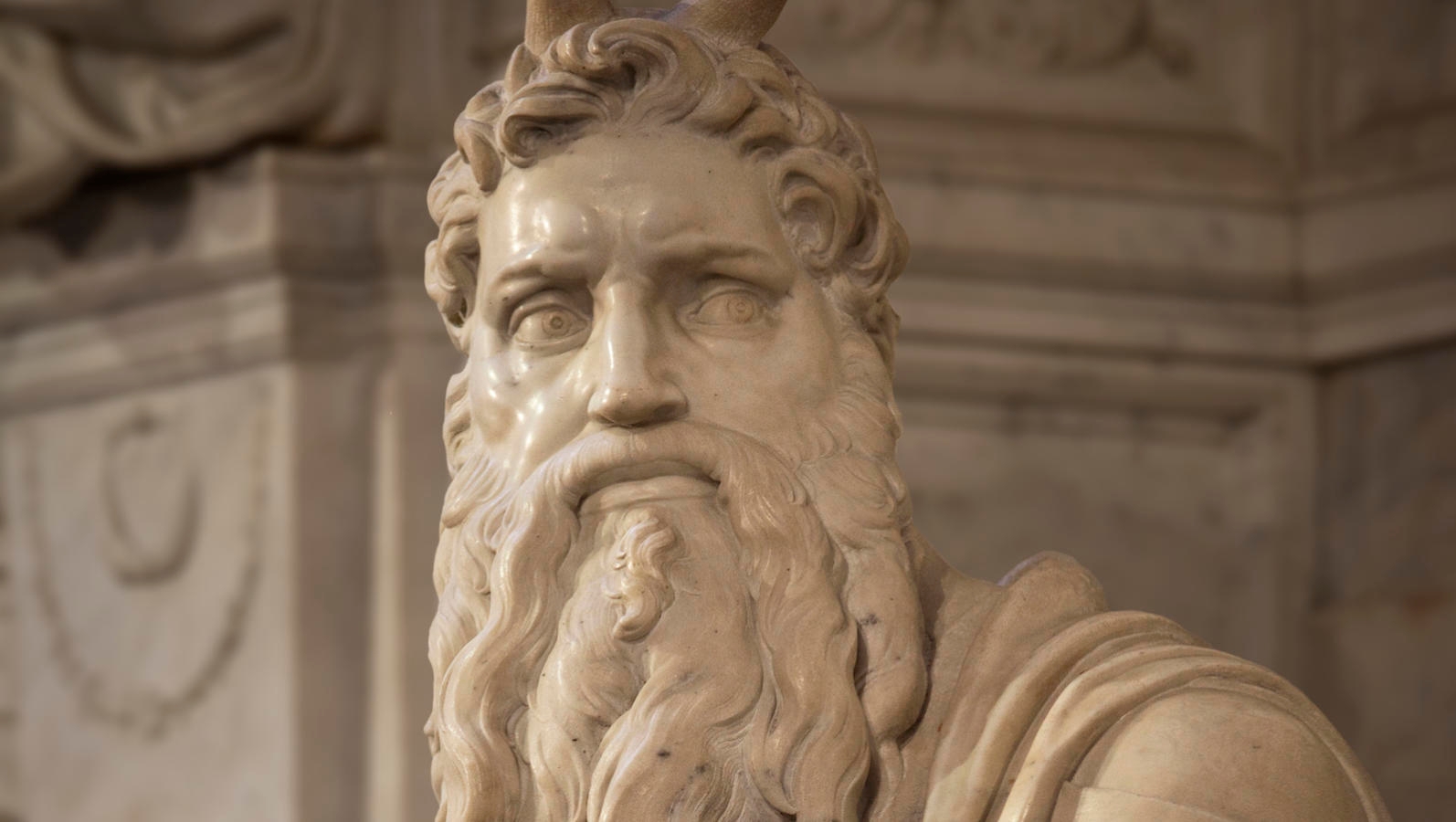Commentary on Parashat Shemot, Exodus 1:1-6:1
The second book of the Bible is the Book of Exodus–Shemot. The first portion, which goes by the same name, tells the story of the Egyptians’ enslavement of the Jewish people, who have now grown in size and are viewed as a nation, rather than a family or clan.
The Egyptian oppression of the Israelites goes from bad to worse, culminating in a failed attempt by Pharaoh to order the Hebrew midwives to kill the male newborns, followed by the horrible decree instructing his own people to throw all male babies into the Nile.
In an attempt to save their child from this decree, the parents of the baby who will be known as Moses hide him, and then, when he grows too big to hide, place him in a basket on the Nile, where he is picked up and adopted by none other than the daughter of Pharaoh.
Growing Up Rich
Moses grows up in the palace. It is unclear to the reader what the extent of his knowledge of his Jewish origins was. However, we are soon told that Moses grew, and “went out to his brethren, and saw their sufferings.” He sees an Egyptian taskmaster striking a Jewish slave. Moses’s reaction is swift and violent; he looks around to ascertain that no one is watching, smites the Egyptian, killing him, and buries the body in the sand.
With your help, My Jewish Learning can provide endless opportunities for learning, connection and discovery.
The next day, Moses goes out of the palace again. This time he encounters two Hebrew men, fighting. He reproaches the aggressor: “Why are you hitting your fellow?” This little exchange ends on an even more problematic note than yesterday’s–“who made you an official and judge over us? Do you want to kill me, as you killed the Egyptian?” the aggressor says to Moses, ending Moses’s attempt at peacemaking.
As Moses feared it would, the news of his killing the Egyptian reaches Pharaoh, who, seeing in Moses an obvious threat, decides to have him executed. Moses runs away from Egypt, settling in Midian, where he immediately has another adventure.
Moses arrives at a well, which, in the Bible, is a good place to meet people. Sure enough, the seven daughters of the local priest arrive, and begin to water their flock. Suddenly, a group of shepherds arrive, and chase the girls away. Moses stands up and drives them away, saving the girls, and, while he is at it, waters their flock.
Becoming a Shepherd
Subsequently, Moses marries one of the daughters, Zipporah, and becomes a shepherd for his father-in-law. It is while he is out in the wilderness with the sheep that he sees a bush, on fire, but not consumed. “I will go over there,” he says, “and see this great sight–why is the bush not burnt.” It is at this point that God speaks, for the first time, to Moses, and offers him the job of savior and leader of the Jewish people.
In an attempt to understand Moses’s development as a person, and why it was that he was chosen by God to lead the Jewish people, I would like to look at the four vignettes described above, which constitute everything we know about Moses before he is chosen by God to lead the Jewish people out of slavery into the Land of Israel, and to receive the Torah. If we look at these four stories, we see four distinct stages in Moses’s development, four different modes of behavior on his part.
In the first story, in which he kills the Egyptian, Moses is violent, angry, powerful, aggressive, and also scared. His focus is to protect, avenge, and seek justice for the Jewish people against their oppressors, the Egyptians.
On one level, he succeeds; he kills the Egyptian, thereby stopping him from hitting the Jew. On a number of other levels, however, he fails. He is clearly afraid of the consequences of this act, and with good reason, as Pharaoh, once he hears about it, forces him to flee for his life. The act is also, we see in the next story, unappreciated by the people he is meant to be helping, and, actually, makes no real difference to their lives, as they remain slaves.
Moses as a Teacher
The second story casts Moses as a teacher, a moral guide to the Israelites. The depiction of the two men fighting, and the churlish way in which they respond to his attempt to mediate between them, would seem to indicate a degraded state, one in which the Israelites have been so badly affected by the experience of slavery that whatever unity and self-respect they once possessed is gone. They also see Moses’s smiting the Egyptian as a murder, rather than an act of rebellion or retribution.
Here, again, although he shows a spirit and a vision that is noble and grand, Moses fails. His attempt to act as a leader of the Jewish people and to manage their internal affairs is met with distrust and derision, foreshadowing, perhaps, the difficulties he will have with the Jewish people during the Exodus and the forty years in the desert.
Once he flees Egypt, Moses has what would seem to be his first fully successful experience as a leader and protector, when he successfully saves the daughters of the Priest of Midian from the local bullies. Interestingly, here he is less violent than he was in Egypt–the Bible simply uses the verb “saved” to describe what he did–“and Moses arose and saved them.”
This stands in contradistinction to his focus in Egypt, which seemed to be on getting the Egyptian, rather than helping the Jew, and, in the second story, with the two fighting Jews, on chastising the evil-doer, rather than helping his victim. It is also worth noting that in Midian, Moses was saving strangers, non-Jews, whereas in Egypt the text emphasizes that he was dealing with and was moved by the plight of his “brethren.”
The final vignette, in which Moses sees the burning bush, can be seen in a simple way; he sees the bush burning in a strange way and goes to check it out, and then God speaks to him. It makes more sense, however, to see this not as a pyrotechnics display put on by God to impress Moses and get his attention, but, rather, as a final, ultimate step taken by Moses, which constitutes the final stage in his evolution and growth as a person and a leader.
A careful look at the text bears this out: “Now Moses herded the flock of Yitro, his father-in-law, the priest of Midian. And he led the flock far away, into the wilderness, and came to the mountain of God, to Horev. And the angel of the Lord appeared to him in a flame of fire within a bush, and he saw, and behold, the bush burned with fire, and the bush was not consumed. And Moses said: ‘I will turn aside, and see this great sight, why does the bush not burn up.’ And God saw that he turned aside to see, and the Lord called to him from within the bush…”
It seems clear that there is a moment when Moses is called upon to either ‘see’ this sight and decide to go investigate it, and in doing so meet God, or fail to do so, and continue his walk in the wilderness as a shepherd. It is only when God “saw that he turned aside to see” that he calls upon Moses. To me, this feels like a test, a last check by God to see if He really does want to call upon Moses to go back to Egypt and demand of Pharaoh that he let the Israelites go. If so, what kind of test is it? How does one pass, and how does one fail?
The Lessons of Distance
If we look at the stories together, it seems to me that the lesson Moses needed to learn was the lesson of distance, of disinterestedness. Moses began his career as a hot-head–his first act was to kill the Egyptian. As we have shown, this act, although perhaps morally defensible (the Rabbis talk about this question), served no real purpose; it is almost totally symbolic, as it did not bring the end of the Israelite’s suffering any closer.
In his next act, Moses looks closer to home, towards the Jewish people themselves. But, here, again, he is unsuccessful. Angrily, he calls the aggressor “rasha”–“wicked one,” and, if one wants to give credence to the words of the perpetrator, and believe him when he accuses Moses of wanting to kill him, Moses said this with murder in his eyes. If he succeeding in establishing who was evil, he failed to do anything about it.
It is only in Midian, where the victims are strangers, and where, perhaps as a result of their being strangers, Moses’s actions are devoid of anger, violence, and excess emotion, but are focused on simply saving the victims, that Moses finally succeeds.
Successful Model
Perhaps Moses is constructing a new, more successful model for his leadership — the point is not the emotional baggage, the symbolic gesture, or a battle to the death with “evil” — the point is to actually do some good, to succeed in improving things, to ‘save’ the situation, rather than do battle with it.
And then comes the final lesson, the lesson of the burning bush. Here, Moses is challenged to be interested in something that doesn’t matter. Something that has no right or wrong, no apparent moral weight, no good guys and bad guys. Something that is simply interesting, worth looking into, worth investigating.
The test of the bush was this: is Moses able to ‘see’ (and for those of you out there who would like to look at the text, the verb ‘lir’ot‘–‘to see’, appears again and again in the first and the last of the four stories) something that is not on his agenda, not part of his struggle, his anger, his fight? Is he able to see disinterestedly, out of simple curiosity about what might be happening?
Can Moses, who seems, in the first three stories, to be totally wrapped up in the struggle for justice, show interest in other, perhaps more spiritual things? Can he see beyond the noble but narrow role that had constructed for himself as savior of the oppressed and chastiser of the oppressors?
It is only when Moses “turns aside”–perhaps not only from the road he was on with his father-in-law’s sheep, but also from the passionate, violent, symbolic battles he had been waging, and is able to step out of that persona for a moment and see and experience other things, that he is ready to be called by God.
Provided by the Bronfman Youth Fellowships in Israel, a summer seminar in Israel that aims to create a multi-denominational cadre of young Jewish leaders.



